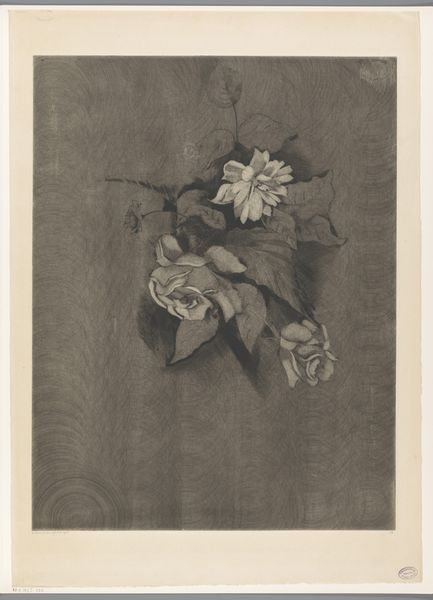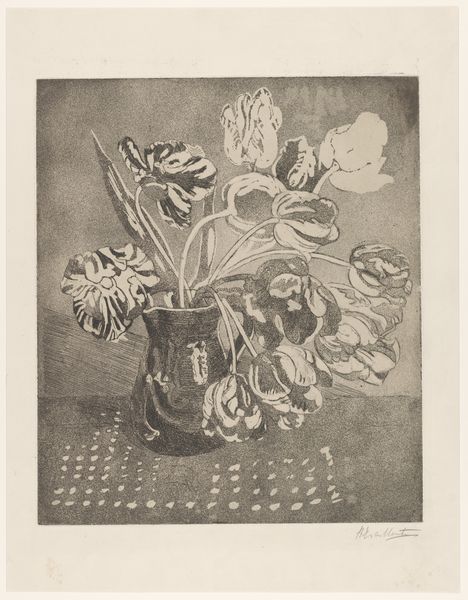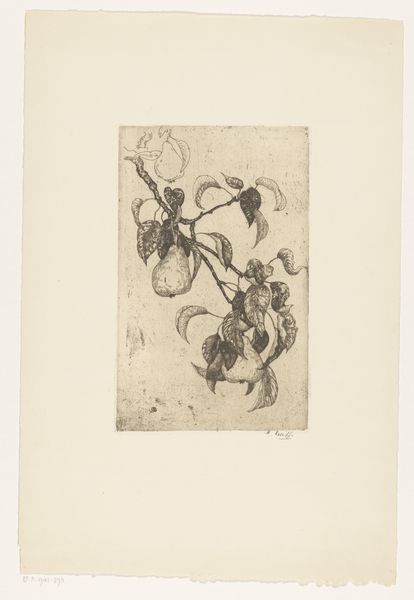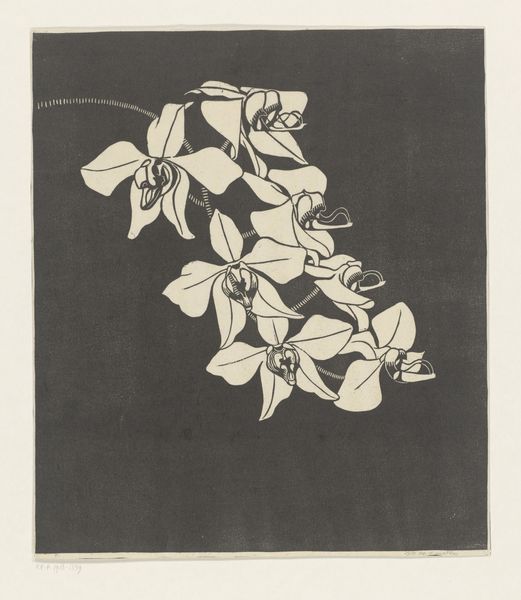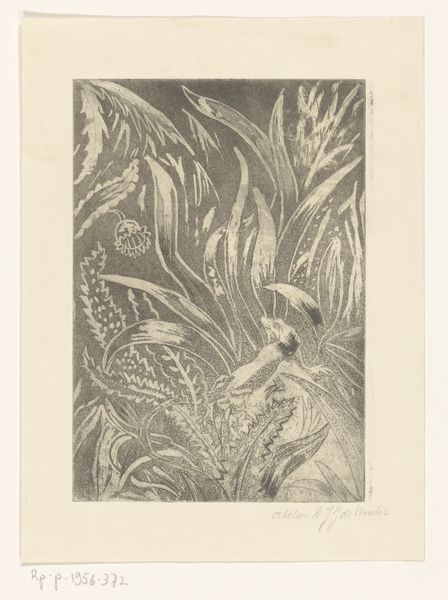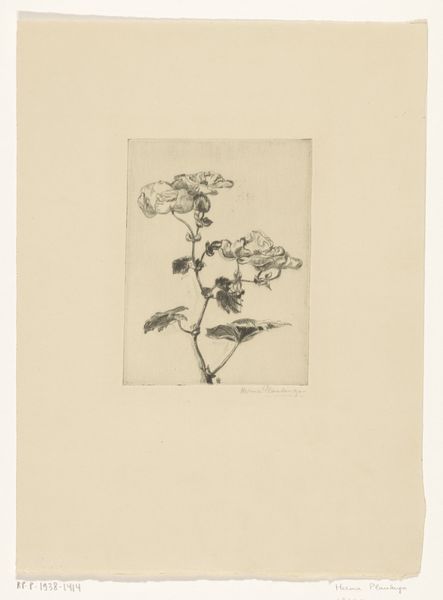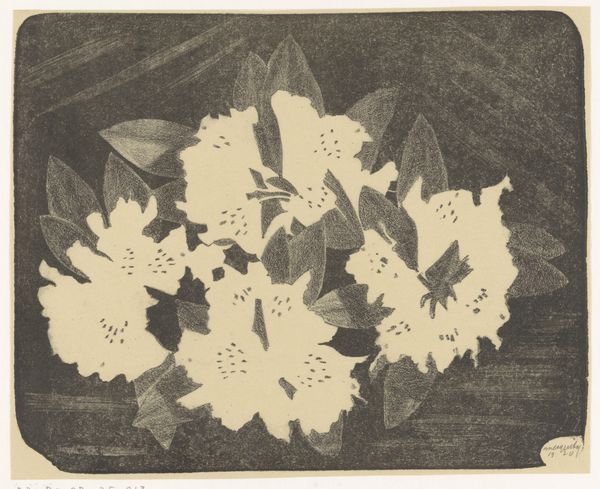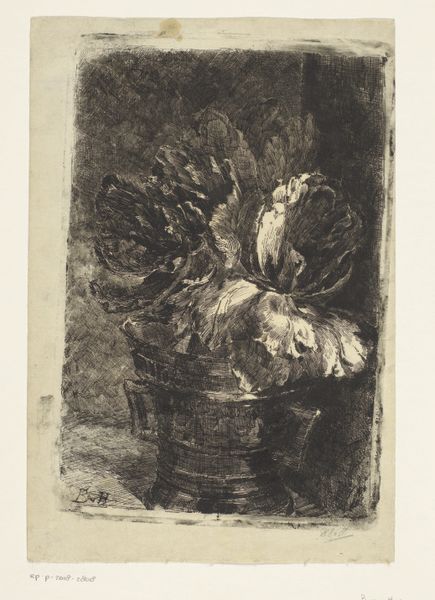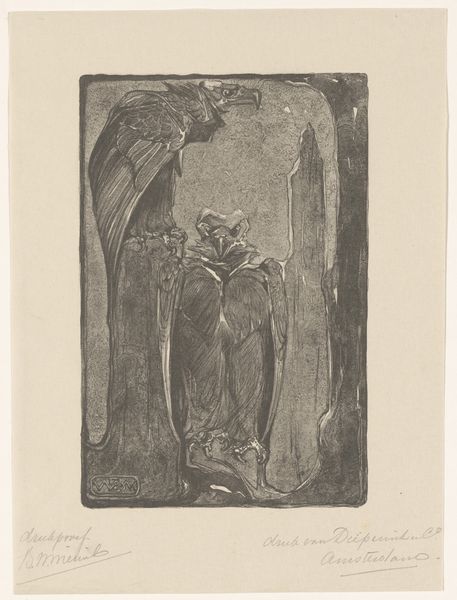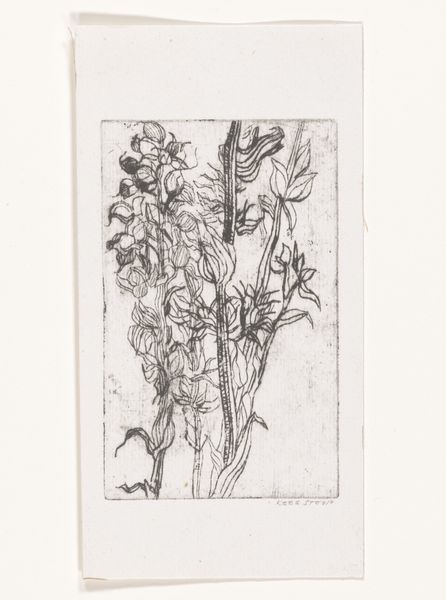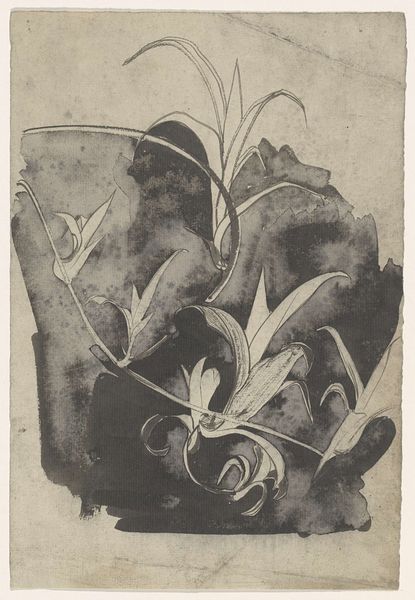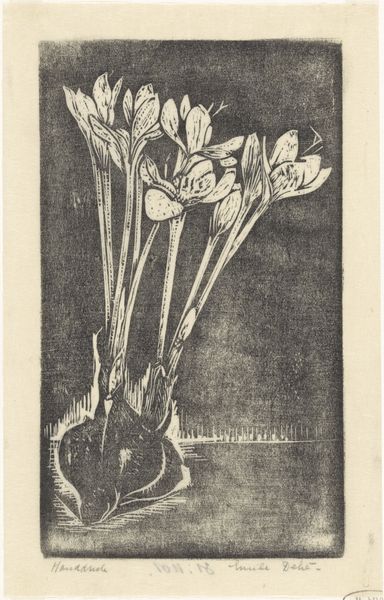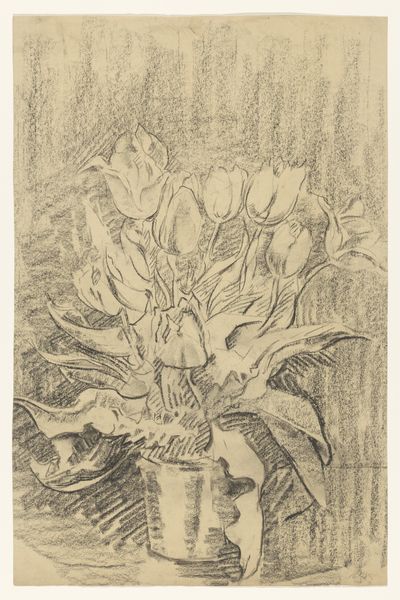
drawing, print, etching, paper
#
drawing
# print
#
etching
#
etching
#
paper
Dimensions: height 450 mm, width 318 mm
Copyright: Rijks Museum: Open Domain
Curator: We’re looking at “Vaas met tulpen,” or “Vase with Tulips,” a print by Barbara Elisabeth van Houten. Its date is estimated between 1872 and 1950. The media used include etching and paper. Editor: It has a melancholy sort of beauty. The etching creates this lovely hazy texture, a little blurred around the edges. They seem like ghosts of tulips, really. Curator: Yes, that visual texture arises from the process itself, the controlled corrosion of the metal plate... We can see how line work and tone interact here, a hallmark of Van Houten’s commitment to the graphic arts. It's interesting how she merges the traditions of fine art and printmaking, inviting a reflection on art’s reproductive nature. Editor: It definitely leans into the print's potential for shadow and subtlety. There's a stark contrast between the very dark tulip on the left and those almost translucent blooms on the right. Like they're catching their last light. Curator: You’re responding to a key element: the use of chiaroscuro, the treatment of light and dark. Etching, as a replicable process, democratized image production and shifted how the 19th and early 20th-century Dutch consumed visual information. Prints brought art to a broader audience, influencing taste, and potentially, social discourse. Editor: Makes you think about who owned this, hung it on their wall. Maybe they loved gardens, maybe it reminded them of a loved one… it whispers of something lost, somehow. The texture alone speaks volumes; you can practically feel the rough quality of the paper beneath your fingers. Curator: Indeed. Van Houten worked in a period when etching underwent a significant revival. We can observe an increased interest in the craft and artistry. Prints allowed artists to explore detail and depth using methods different from those available through drawing or painting. Editor: What a journey for those humble tulips. Starting in a garden, then translated to metal, etched by acid, pressed onto paper, and now, centuries later, whispering secrets to us. Curator: A story etched in material. The etching is an index, pointing to layers of production and meaning. Editor: A little floral poem, penned in acid.
Comments
No comments
Be the first to comment and join the conversation on the ultimate creative platform.
